There’s a lot more to getting stronger than the actions of simply, and progressively, lifting more. Much of it has to do with caring about setting a proper foundation of solid skills and a successful approach that guides training decisions. For kettlebell beginners particularly, that means starting out by knowing and addressing limitations that could point you in an ineffective direction and considering the mindset factors that contribute to strength: quality, lifestyle, your why, and pursuing mastery.
In a recent post, we explored how to set up a kettlebell training area in your home—your personal courage corner. With your strength space staked-out and kitted, let’s revisit the basics in another way: considering the foundational principles of the training that you will practice in your corner.
Let me start with a common sense disclaimer. Any internet-based advice I can give you is blind. I don’t know your medical history, your athletic experience level, or whether you’ve picked up a kettlebell before. So, what I tell you in this article, and any other like it, needs to be taken with a large grain of salt. Be sure to consult with your doctor before starting a kettlebell program, or any other kind of physical training, to make sure you don’t have an underlying condition that would preclude your participation.
Phew, aren’t you glad that’s over? Me too. Now we can move on to the matter at hand: starting your kettlebell journey.
PART 1: Align Your Ducks Before You Begin

FMS: You Can’t Build Fitness on Top of Dysfunction
The first order of business is to get a Functional Movement Screen (FMS), performed by a movement professional. They will be able to see what you’re capable of and identify any fundamental patterns that you either can’t access at all or cannot do so without compensating or more importantly, without pain. They can dive deeper to find the root cause of the issue and provide corrective exercises to remedy them. For example, locked-down ankles will compromise your squat. Shoulder problems? You will likely struggle to perform get-ups, snatches, presses, and other overhead exercises. And if your core stabilization doesn’t kick in at the right time, everything from planks and pushups to swings will suffer. The goal of the FMS is not to find flaws for the sake of them, but rather to get you moving well enough to make sure you’ll positively adapt to the stressors that kettlebell training will subject you to. As Gray Cook rightly says, “Move well, then move often.”
Find a Guide
Next, I urge you to find a StrongFirst certified instructor in your area. I say this with the caveat that when I got started with my kettlebell practice, all I had was a copy of Pavel’s The Russian Kettlebell Challenge book and a 24kg bell. That said, I was already an athletic trainer with years of barbell and bodyweight training under my belt. So even though there weren’t many experienced instructors around 2001—I certainly didn’t know any—I coped with the on-ramp well.
For someone without a similar background, it will be much easier to enter the world of kettlebell training with the help of an expert guide. Unlike certain other credentials, each StrongFirst certification level is rigorous, physically and mentally challenging, and demands a strong spirit. It requires would-be instructors to demonstrate a high degree of technical competence developed from months of practice and excellent coaching skills. Not everyone earns a designation. Working consistently with a well-qualified coach can shorten your learning curve considerably and help you achieve the progress that you seek faster, and likely more safely than if you were flying solo. It will also enable you to transcend the line of best-fit recommendations in this article and develop a more personalized plan.
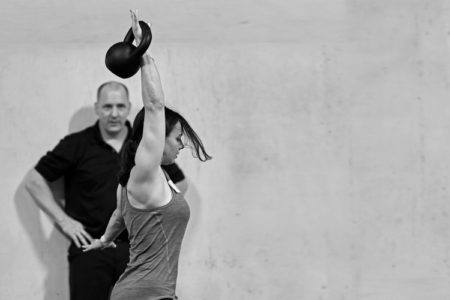
In the unlikely scenario that there isn’t a StrongFirst instructor in your area—or if you cannot presently afford to invest in coaching or attend a one-day course—you still have options. Choose one or all of them.
1. Essential Kettlebell Exercises Online Training
Our StrongFirst Essential Kettlebell Exercises online course can also provide you a great way to learn the essentials. You’ll get ten video modules each with a printable workbook covering everything from safety to foundational exercises to programming. You’ll see movement breakdowns, demonstrations, and drills to improve your form and have access to the online course forum to ask questions.
2. Learn on Your Own with Simple and Sinister
With a copy of Pavel’s book Simple and Sinister, you can follow a similar approach to mine. Start with the movement prep exercises and then concentrate on learning the deadlift. Then you can progress to the swing and get-up. In the courage corner article, I described such a training area as being conducive to a minimal approach to kettlebell training. In which case, Simple and Sinister is the minimalist’s handbook.
3. StrongFirst Articles and Community Forum
In addition to buying the book (which everyone interested in kettlebells should own), spend time on the StrongFirst website, reading articles like this one, watching instructional videos, and interacting on our community forum, where you can find helpful advice on just about any kettlebell-related topic. You can also sign up for our newsletter, which will keep you up to date about the latest resources and nearby events.
From Theory to Practice
It’s obviously not enough to learn the theory—you have to also start cultivating a practice. This involves consulting the resources I just mentioned and setting up your courage corner. You’ll also need the tools of the trade—kettlebells themselves. I had a single 24kg bell when I began, but again, I had a decent base of strength and was fairly fit. There also wasn’t the same range of options that’s available today. While I lack the context needed to know your current capabilities, you can refer to the chart below that I’ve borrowed from Simple and Sinister to guide your selection.
PART 2: Where the Rubber Hits the Road
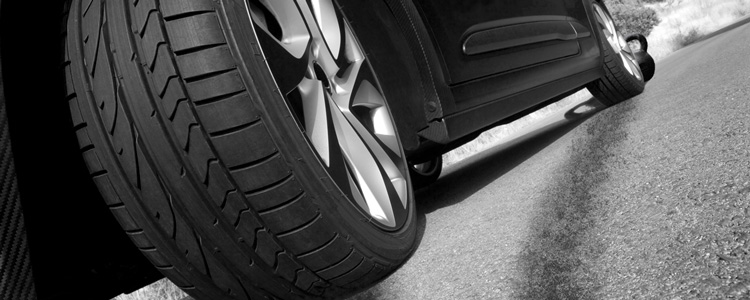
Considering Organism and Environment
Once you’ve purchased your kettlebells, set up your courage corner, and, hopefully, consulted a movement professional and SFG kettlebell instructor, you’re ready to begin.
We’ve covered the practicalities. Now it’s time to get a bit more philosophical. I implore you to harness your enthusiasm and make haste, slowly. Instead of thinking about kettlebell training as merely “working out,” think of it as a daily opportunity to learn and refine new skills. There is no such thing as spending too much time on your deadlift, as it will form the foundation for your swing and all other ballistic movements. Similarly, spending hour after hour refining your get-up technique will stand you in good stead to perform presses and other overhead exercises.
Being great at the basics is what separates a professional from an amateur.
Providing you scale appropriately (i.e., deadlift to swing to snatch), you will develop strength and skills to advance to more complex exercises at a later date. But this is never to be rushed and isn’t necessarily the goal for everyone. If you stuck with the swing and get-up as in Simple and Sinister, you will get stronger, get fitter, improve your conditioning, and be better prepared to perform in sports and life.
What He “SAID”
Another important concept to understand is the SAID principle—specific adaptation to imposed demands—or getting good at what you repeatedly do. Gray Cook brilliantly expanded on this. “The Organism’s specific adaptation to the Environment’s imposed demands. It’s easy for our lifestyles to contain one or more organism-related problems, such as eating poorly, dealing with chronic emotional stress, or getting insufficient sleep. In which case, it would be folly to try and feel or perform better by tweaking your kettlebell programming.” This would be what Gray calls “Trying to bring an environmental solution to an organism problem.”
If you (i.e., the organism) aren’t in a position to adapt, then no matter how much you refine the tools, program, location of your courage corner, and so on, you’re only ever going to achieve sub-optimal results. A StrongFirst instructor or our online course can help you nail your programming, but you have to also address lifestyle factors that might be hindering or undermining you.
Prioritize Recovery to Positively Adapt
We cannot look at the training stimuli you’re subjecting yourself to in isolation—we must also consider recovery. It’s essential that you sleep, eat, and hydrate well if you want to get fitter, be healthy, and progress in your kettlebell training. If you feel like you can never recover between sessions, it’s an indicator that you are doing too much and need to back off a bit.
Your training should leave you feeling great, not destroyed; build you up, not tear you down.
While you should challenge yourself in your kettlebell practice, never do so much that you cannot train with purpose the following day. Extreme soreness should not be used as the yardstick to the quality of your training. In fact, it will negatively impact your ability to train the next day and to perform in your life, sport, or work duties. Someone who has been training for many years might well increase their volume when preparing for a certification, following a more advanced program, or pursuing a specific goal. But for a beginner, it’s advisable to keep the daily and overall volume low. Your training should leave you feeling great, not destroyed; build you up, not tear you down. This is a fundamental programming principle we follow at StrongFirst.
How Often
In Simple and Sinister, Pavel addresses the inevitable question about how often you should perform swings and get-ups with a simple response: “Repeat until strong.” He is not saying to replicate one training session over and over again. Not only would you get bored, but your body would become used to the stimulus and stop adapting. That’s why at StrongFirst, we believe in the concept of “waviness.” This has nothing to do with surfing (as the name might suggest) but rather refers to the need to vary the volume, intensity, and density each day. Per Pavel’s book, you could do swings and get-ups every day and keep progressing, but only if you change up the sets, reps, and weight. So if you do 100 swings one day, try 50 the next, and 70 the next. In doing so, you will challenge your body to adapt continuously.
In other words, you can do the same thing every day, as long as you don’t do the same thing every day.
Ask Better Questions = Get Better Answers
“Ask not what your kettlebell can do for you, but what you want to do with your kettlebell.” OK, that’s not exactly how the famous line from John F. Kennedy’s Inaugural Address went, but it is pertinent nonetheless. Before you plunge into your kettlebell practice, it’s worth asking yourself, “What am I hoping to achieve?” and figuring out your “why” as Simon Sinek puts it.
If you’re looking for a time-, space-, and equipment-efficient physical practice, then you’ve found the right thing. Or maybe you want to be better able to keep up with your kids or grandkids. Kettlebell training can help with that, too. Perhaps you want to be stronger and more powerful so you can improve your sporting performance. Again, I can’t think of a better tool. When you know where you’re trying to get to, you will find a more appropriate route that gets you there without unnecessary detours and roadblocks. Smart kettlebell training delivers.
Let’s return to the organism/environment topic for a moment. If you reach a plateau or even find yourself regressing somewhat, you need to make sure you’re asking an organism-related question for that kind of problem, and an environment-related one if it’s more to do with your program. If you challenge yourself to ask better questions, you will inevitably come up with better answers as well.
The Pursuit of Mastery
StrongFirst certified instructor Joe DeLeo once told me about the Portuguese rowing team’s training, and how they’d sometimes rest for eight minutes after going hard for 500 meters, 12-15 minutes after 1,000 meters, when peaking a week out from the World Championship regatta. It’s the same with elite sprinters and Olympic weightlifters—they take longer rest periods to ensure that every single repetition is performed with the highest quality possible. It’s only in consumer-level fitness settings that we see shorter breaks and low rest-to-work ratios like 2:1 and 1:1.
Do away with the foolish pursuit of more and instead do less, better.
How much rest do you need between sets? Longer than you think you should need; just as you’d be well advised to do less work than you think you’re capable of. And, for that matter, use a weight that’s lighter than you believe you can handle. Doing so will help ensure that you do away with the foolish pursuit of more and instead do less, better. That’s a core tenet of any sustainable practice.
Kettlebell training can be intense, but should never become the helter-skelter pursuit of getting sweaty or exhausted. There are lots of ways to do that, and this isn’t one of them. Instead, look at it as a never-ending quest for mastery—not just of a certain tool, but more importantly, of your body. After 18 years of kettlebell work, I feel like I’m just starting to get somewhere.
In writing this, I’m reminded of an interview of the legendary cellist Pablo Casals I once read. When asked why, at age 90, he continued to practice, he replied, “Because I think I’m making progress.” It’s the same with the bell as with his cello and bow. Nobody ever achieves total mastery. But it’s the relentless pursuit of it that gives our quest meaning.

Editorial credit: Oleinik Luliia Shutterstock.com

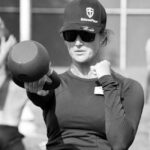

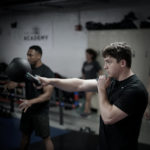
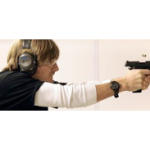




Excellent!
Terrific article!
Thank you Dennis and Kozushi
Thank you Brent, Riley, Nate, and Craig
Great, thought provoking article. Thanks
I really enjoyed this article. Thanks Brett.
I really appreciate the communication of training principles. When only programming is offered it’s hard to see the forest for the trees.
Great stuff!